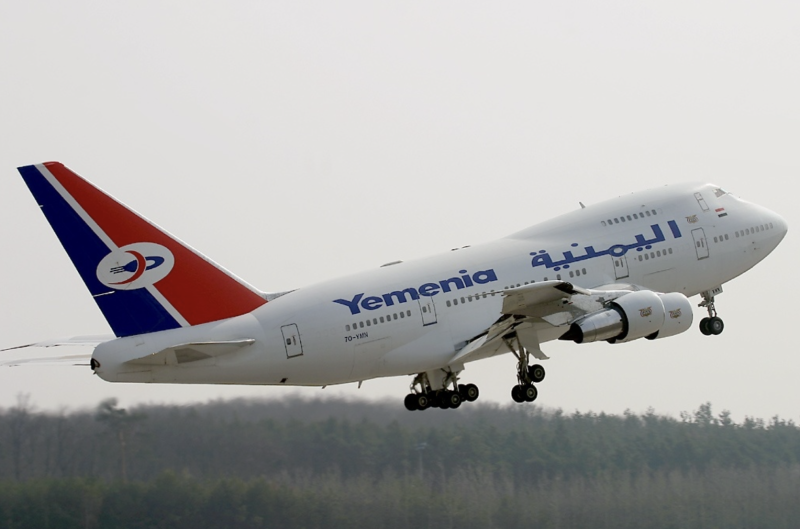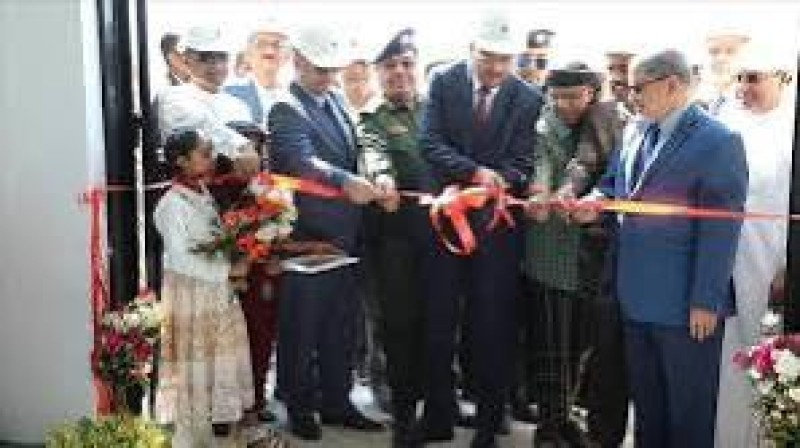Brokering a Ceasefire in Yemen’s Economic Conflict - Middle East Report N°231 | 20 January 2022


Principal Findings
What’s new? UN-led efforts to broker a ceasefire in Yemen have repeatedly stalled due to a standoff between Huthi rebels and the internationally recognised government over who has authority to control goods, particularly fuel, entering the Red Sea port of Hodeida. With the conflict escalating, the UN is struggling to make headway.
Why does it matter? The economy has become an integral part of the parties’ efforts to strengthen their own positions while weakening their rivals. The economic contest has fuelled the fighting at the front and impeded attempts at peacemaking. But diplomats working to stop the war have too often sidestepped the issue.
What should be done? Yemen needs an economic ceasefire as much as a military one. In concert with other UN actors, the new UN envoy should launch a mediation track to identify the economic conflict’s key players and begin to lay the groundwork for an economic truce even while the shooting continues.
Executive Summary
Yemen is caught up in overlapping emergencies that have defied mediation. In the north, bloody battles rage for control of Marib governorate between the internationally recognised government of Abed Rabbo Mansour Hadi and the Huthi rebels who ousted him in 2015. Hadi’s government prevents fuel from entering the Huthi-held port of Hodeida, and a tug of war over the riyal, Yemen’s currency, has led to its collapse in nominally government-controlled cities. These crises form part of a struggle over the economy – call it an economic conflict – that has compounded Yemen’s humanitarian crisis, accelerated its political and territorial fragmentation, and stymied peacemaking. To date, mediation efforts have tended to treat economic matters as technical issues or sought to address them as “confidence-building measures” enacted in service of political dialogue. The new UN envoy should recognise them as core to the conflict and negotiate an economic ceasefire at the same time, and in much the same way, he seeks to arrive at a military truce.
The economic conflict pits the Hadi government against the Huthi rebels for control of the country’s natural resources, trade flows, businesses and markets. State and non-state institutions that facilitate and hinder trade, such as banks, customs authorities and other regulatory bodies, along with the parties’ respective security services, play supporting roles. The Huthis’ advantage in this struggle is their growing control of territory and population centres; the Yemeni government’s is its international legal authority.
The economic conflict’s roots trace back to the country’s failed political transition, which began in 2012 and collapsed in the face of the Huthi rebellion in 2014, setting in motion seven years of civil war and foreign intervention. The economic and military conflicts did not progress at the same pace. Some aspects of the former were held at bay during the war’s early phases by an informal, technocrat-led economic truce that helped to protect pre-war economic institutions that remained highly centralised even as, in other ways, the country broke apart. Civil servants in Sanaa engaged with political leaders on both sides of the conflict and the parties quietly allowed the central bank to maintain a level of neutrality. The truce was never meant to be more than a stopgap measure, however, and it did not last.
Since the economic truce collapsed over the course of 2016 and 2017, the economic conflict has become sharper and more entwined with Yemen’s shooting war. Its most visible features are the splitting of the central bank into rival authorities in Sanaa and Aden, a power struggle over control of trade flows and taxation of fuel in particular, and the precipitous drop of the riyal’s value in nominally government-controlled areas. The riyal’s depreciation has pushed the price of imported necessities such as food and fuel out of reach for many people. As a result, Yemen is the site of what the UN says is one of the world’s largest humanitarian crises. By the end of 2021, the war had cost around 377,000 Yemeni lives, according to the UN Development Programme. Of this number, most were killed not by front-line fighting, shelling or airstrikes, but by hunger and preventable disease, the overwhelming majority of them young children and women.
The parties’ tactics in the economic conflict have often backfired. The government’s initiatives to wrest control of the economy from the Huthis have tended to rebound against it, in large part because the Huthis control Yemen’s main population centres and hence its biggest markets. Diplomats have struggled to convince the government of the folly of its actions, in part because the economy is one of the few remaining sources of perceived leverage for President Hadi and his inner circle. Considering what is at stake – its very survival – the government is unlikely to stand down from economic warfare without major concessions by the Huthis, who perceive that they have the upper hand in the conflict and therefore see no reason to compromise. Yet, by delaying a settlement further, the government risks ceding still more ground to the Huthis.
The parties’ economic tactics have bedevilled the succession of UN envoys who since 2015 have been charged with ending the war. For better or worse, their efforts have tended to focus on the political and military aspects of the conflict while viewing the economic conflict as a subplot even when it is fundamentally bound up with core political issues dividing the parties. The Stockholm Agreement, which prevented a battle for Hodeida, skated over rather than resolved important economic issues. More recent efforts to resolve the Marib crisis and Hodeida embargo have similarly stumbled in treating profoundly important proposed economic concessions as “confidence-building measures”.
This approach needs to change. While the economic dimensions of Yemen’s conflict are not the only impediments to peace, it is difficult to imagine the parties reaching a durable military truce if they fail to reach an economic one alongside it. The new UN envoy, Hans Grundberg, who assumed his post in September, is considering how his office can address the economic conflict. He has some useful models to follow. In Libya, for example, the UN envoy’s office initiated a separate track for economic issues that fall within the framework of broader conflict resolution efforts. Grundberg should take a page from this book, establishing a formal track to address the economic challenges that have become interwoven with the toughest political issues that separate the parties. The concrete objective would be an agreement in which the conflict parties pledge to stop working to damage each other economically and to cooperate in the interests of ordinary Yemenis who desperately need both economic opportunity and better services.
In early 2022, the conflict for Marib escalated. Without progress on the economy, Grundberg is unlikely to be able to stop the shooting. Many of the same obstacles to agreement that have dogged mediators in their pursuit of a military ceasefire will encumber their efforts to achieve an economic truce. Even with international support – which outside actors should certainly lend him – the envoy faces an uphill climb. But that climb will almost surely be steeper still without a dedicated effort that allows mediators to better understand and deal with the economic issues that are so fundamentally bound up with the political drivers of Yemen’s civil war. Seven years into this brutal conflict, it is past time to give this task a try.

Aden -- Yemen Airways has announced the cancellation of the mandatory round-trip ticket requirement for passengers traveling from Yemen to Saudi Ar…

Aden — Ports under the authority of Yemen’s internationally recognized government have received more than two million metric tons of fu…

Mukalla — Local authorities in Hadramout have announced the inauguration of Yemen’s first solar-powered cement station, a landmark proj…